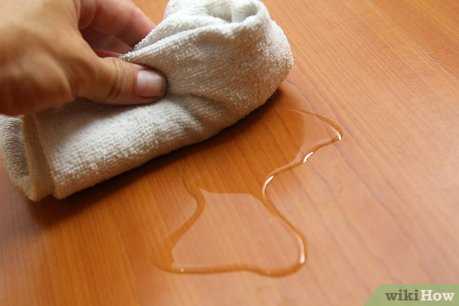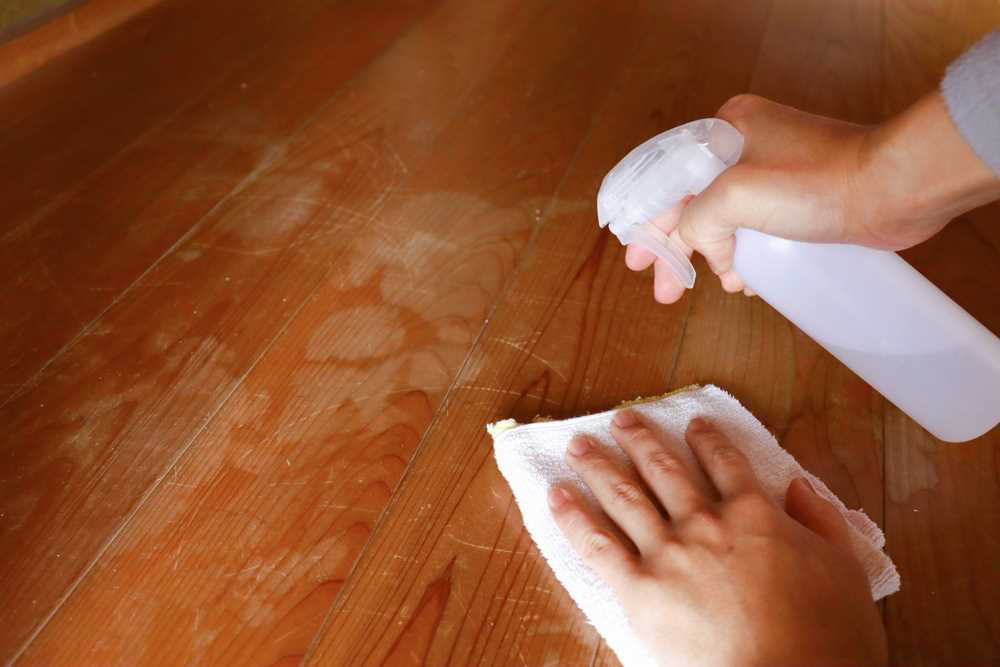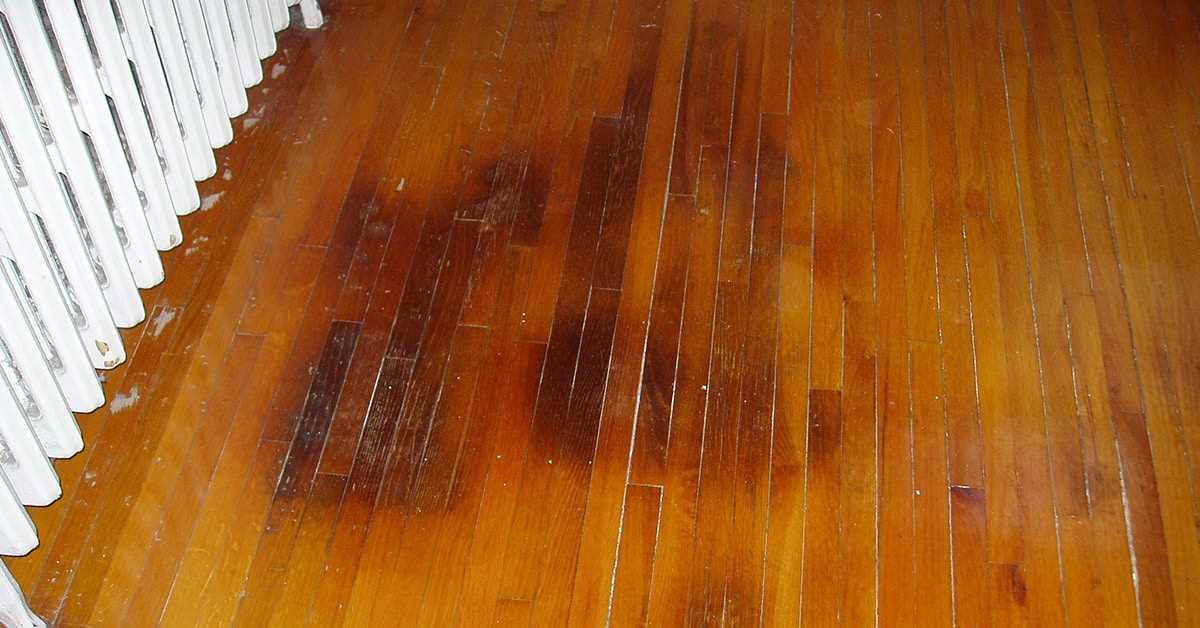



For immediate action, grab some paper towels and blot the area gently. This helps absorb any leftover liquid quickly. Avoid rubbing, as that might spread the problem further.
Next, mix equal parts of white vinegar and water in a spray bottle. Lightly mist the affected spot and let it sit for about 10 minutes. Vinegar neutralizes odors effectively while being safe for your surfaces.
Afterward, sprinkle baking soda generously over the area. This natural deodorizer works wonders. Leave it for several hours, or ideally overnight, to allow it to absorb any lingering scents.
Finally, vacuum up the baking soda and enjoy the renewed freshness. If the odor persists, repeat the process, or consider using an enzymatic cleaner specifically designed for tough odors.
Tips for Eliminating Unpleasant Odors from Wooden Surfaces
First, act quickly. Blot the area with paper towels to absorb moisture. Avoid rubbing, as it can spread the issue.
Next, create a mixture of equal parts water and white vinegar. Apply it to the affected area, letting it sit for a few minutes. Vinegar neutralizes odors and helps break down residues.
Follow with a solution of hydrogen peroxide and dish soap. Mix one cup of peroxide with a few drops of dish soap and apply it to the spot. This will tackle any remaining odor and disinfect the surface.
After treatment, ensure proper ventilation. Open windows to let fresh air circulate, which aids in the drying process and helps eliminate lingering scents.
For persistent odors, consider using an enzymatic cleaner specifically designed for this type of issue. These products break down organic compounds, effectively removing the source of the problem.
Lastly, maintain the area by regularly cleaning with appropriate hardwood products. Regular care can prevent buildup and keep surfaces smelling fresh.
Identify the Source of the Odor

First, observe your surroundings. Check for any areas where accidents might have occurred. Look for stains on the surface or in cracks, as liquid can seep in and create lingering odors. Be thorough; even a small spot can lead to persistent issues.
Utilize Your Nose

Trust your sense of smell. Move around the space and get close to the ground, as odors often linger near the source. If you detect a strong scent in a particular area, it may indicate where the problem lies.
Inspect the Environment
Check furniture, rugs, and any other objects nearby. Sometimes, the scent can cling to these items. If you can safely remove them, do so to see if the odor dissipates. Also, consider any recent changes in your home that might have contributed to new odors.
For additional support in keeping your furry friend healthy, explore options like glucosamine chondroitin for cats. If your space requires maintenance, you might also want to look into whether lawn mower bags are universal for yard care, ensuring a fresh environment outside as well.
Choose the Right Cleaning Solution

Choose enzymatic cleaners. These break down organic substances, neutralizing odors effectively. Look for products specifically designed for pet-related messes.
Vinegar and baking soda can work wonders too. Mix equal parts water and vinegar, then sprinkle baking soda on the affected area, letting it sit for a while. This helps absorb unwanted odors.
Consider hydrogen peroxide as an alternative. A solution of 3% hydrogen peroxide can help eliminate lingering scents. Test it on a small, hidden area first to ensure it doesn’t damage the finish.
Avoid ammonia-based cleaners. They can actually intensify the odor and attract attention from curious noses.
Always check product labels for safety. Ensure that any cleaner used is safe for pets and won’t harm the surface beneath.
Use a gentle scrub brush or cloth to apply the solution. Rinse with clean water afterward to remove any residue, ensuring no sticky substance remains.
Finally, allow the area to dry completely. Proper drying prevents any remaining moisture from becoming a new source of unwanted scents.
Prepare the Area for Cleaning
Clear the space of furniture and any items that could obstruct the cleaning process. This allows for full access to the affected region, ensuring no residue remains. Move rugs, chairs, and other obstacles to prevent further contamination.
Ventilation is Key
Open windows or use fans to circulate air. Good airflow dries the area more quickly and helps dissipate any lingering odors. Adequate ventilation also ensures that cleaning solutions work effectively without being trapped indoors.
Assess the Surface
Check for any visible stains or damage on the surface. If there are deep scratches or areas where the finish is compromised, consider treating these spots separately. This step is crucial to ensure the cleaning solution penetrates effectively without causing further harm.
Apply the Cleaning Solution Properly
Pour the chosen mixture directly onto the affected area, ensuring it covers all spots where the odor lingers. Use a clean cloth or sponge to gently blot the solution into the surface. Avoid scrubbing, as this can damage the finish and push the liquid deeper into the wood.
Let it sit for at least 10-15 minutes to allow the formula to penetrate fully. For persistent odors, consider reapplying the solution and allowing it to work longer. After the waiting period, wipe away any excess with a damp cloth, making sure to remove all residue.
Finally, dry the area thoroughly using a fan or by opening windows to promote air circulation. This step is crucial for preventing any moisture from becoming trapped, which can lead to further issues. Always test the solution in an inconspicuous spot first to ensure it doesn’t affect the finish before applying it to a larger area.
Neutralize Remaining Odors with Home Remedies
For persistent odors, I recommend using a mixture of vinegar and water. Combine equal parts in a spray bottle and apply it to the affected area. This solution effectively neutralizes unpleasant scents and leaves a fresh aroma.
Baking soda is another excellent choice. Sprinkle it generously over the spot and let it sit for several hours, or overnight. Once it absorbs the odor, vacuum it up to reveal a cleaner surface.
Hydrogen peroxide can also be utilized. Mix it with a few drops of dish soap for added cleaning power. Test this on a small, hidden area first to ensure it won’t damage the finish.
Essential oils can provide a pleasant fragrance while combating odors. Add a few drops of oils like lavender or eucalyptus to your vinegar or baking soda mixture. This adds a nice touch while working on neutralizing those lingering scents.
| Ingredient | Method | Effectiveness |
|---|---|---|
| Vinegar | Mix with water and spray | Highly effective |
| Baking Soda | Sprinkle and vacuum | Very effective |
| Hydrogen Peroxide | Mix with dish soap | Effective with caution |
| Essential Oils | Add to cleaning solutions | Pleasantly effective |
Regular cleaning with these remedies will help maintain a fresh environment. Consistency is key to keeping everything smelling nice.
Prevent Future Incidents on Hardwood Floors
To stop mishaps on these surfaces, create a designated area for me and other furry friends. This should be a comfortable spot with a litter box, ensuring easy access. Make it cozy with soft blankets and toys. Regularly clean the box to maintain a pleasant environment.
Monitoring hydration is key. Keep fresh water available at all times and encourage drinking. This helps maintain healthy habits and reduces accidents.
Consider using pet-friendly repellents in areas where I shouldn’t go. These can deter me from unwanted spots while remaining safe for my sensitive senses.
Routine training sessions are beneficial. Teach basic commands and reinforce positive behavior with treats and praise. This builds trust and encourages appropriate habits.
Lastly, ensure regular vet check-ups. Health issues may result in unforeseen behaviors, so staying on top of my health is essential for a happy home.








